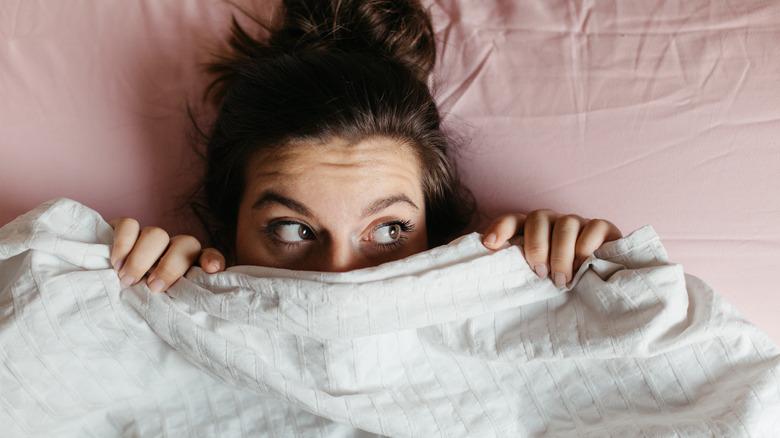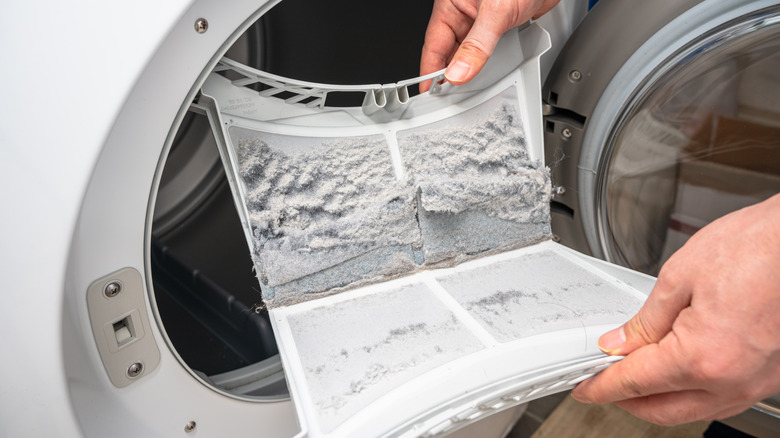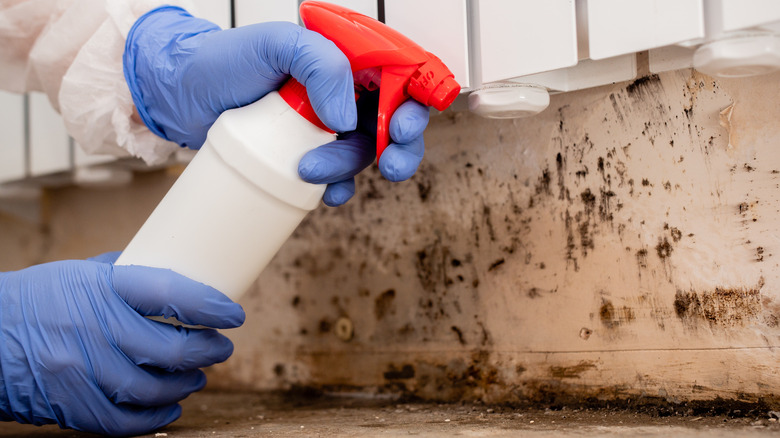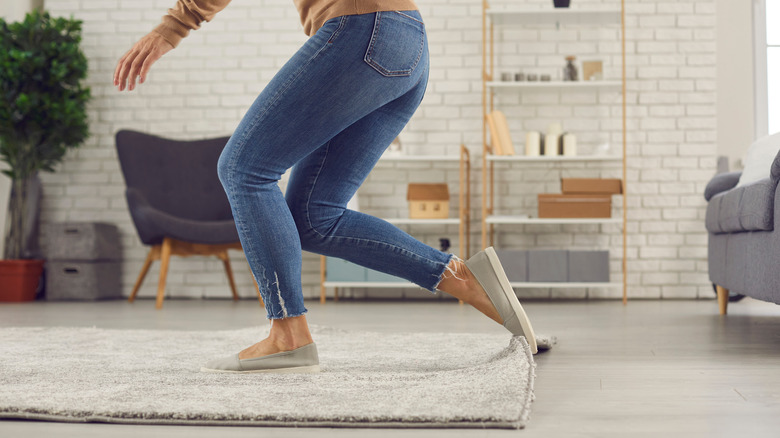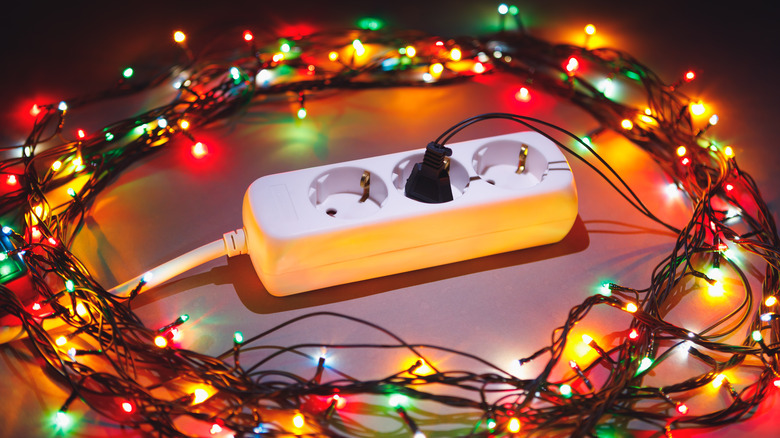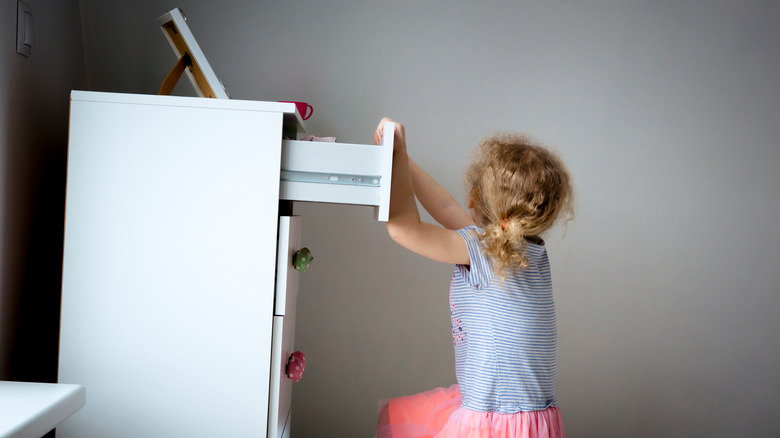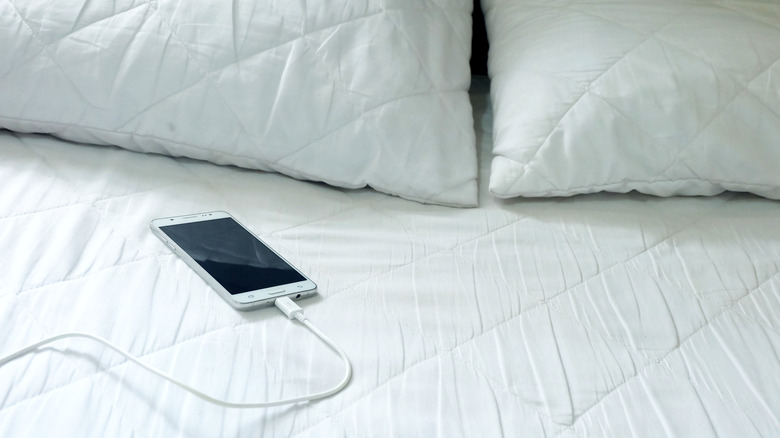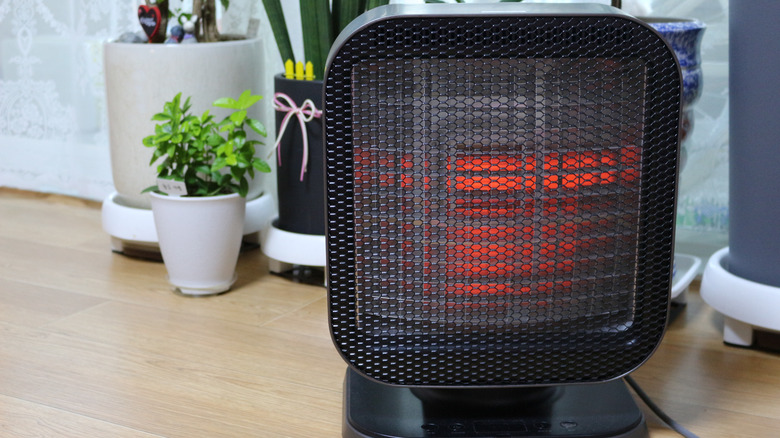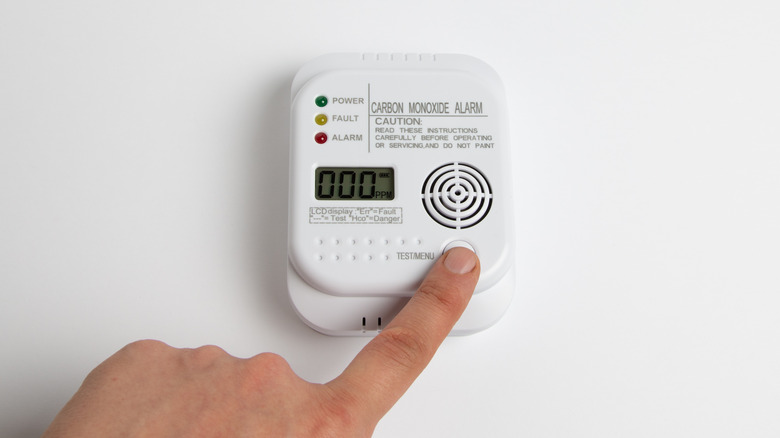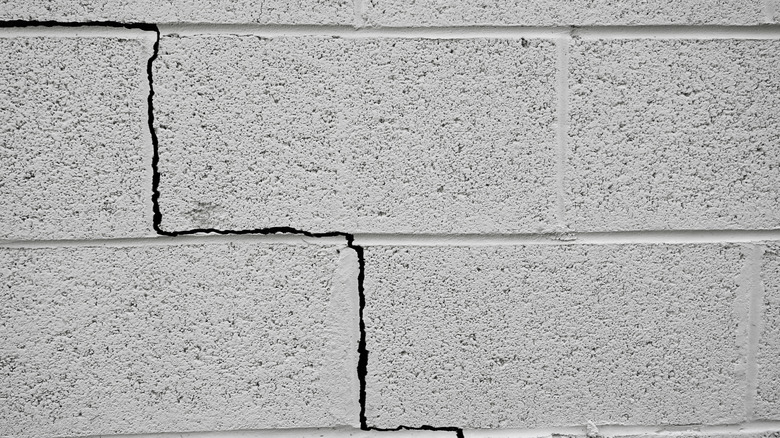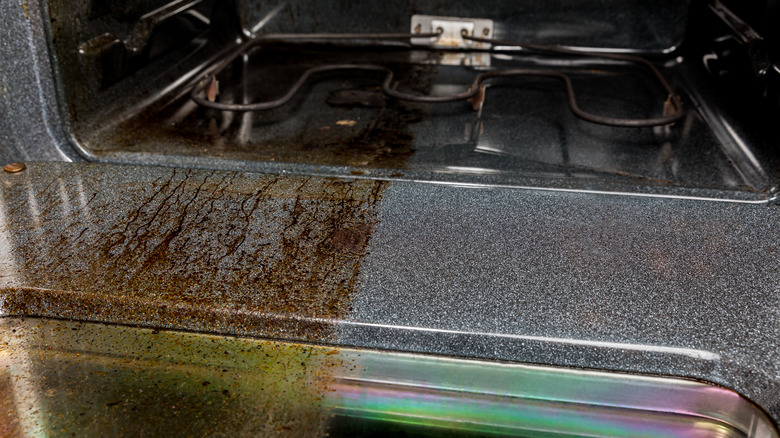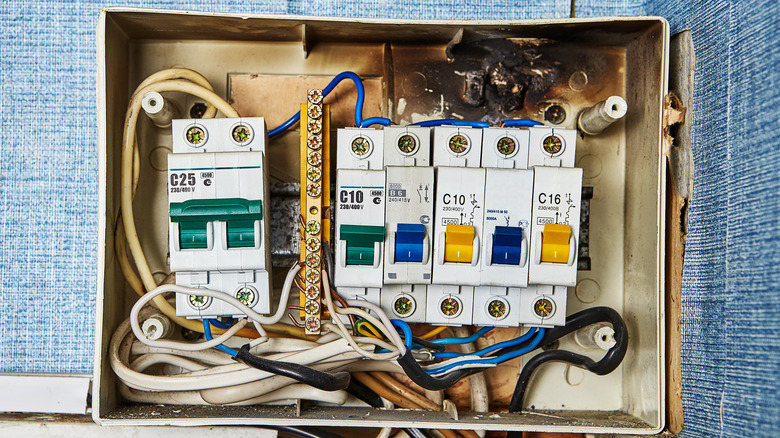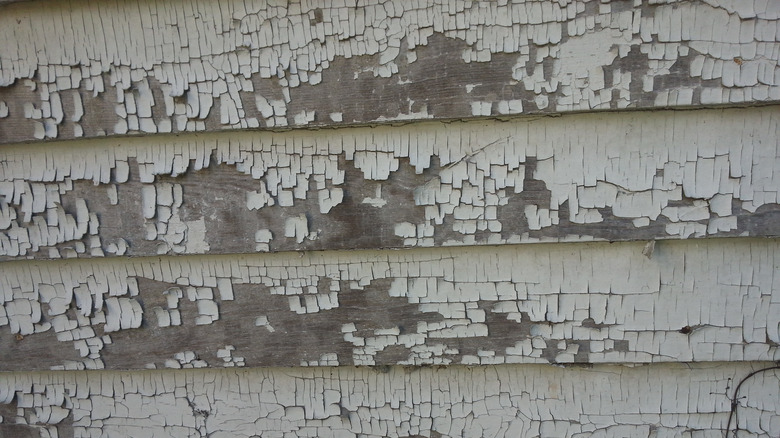Scary Dangers That Are Lurking Around Your Home
We all want our homes to be a haven for ourselves and our loved ones. But no matter how cozy and secure you make your house, it can be full of hazards that end up causing a huge amount of injuries per year, some of which can be fatal. What's more, this number is on the rise. With 93,700 preventable-injury-related deaths recorded in 2019 from accidents happening at home (representing over 54% of all preventable-injury-related deaths by location), this figure was 4.9% higher than the previous year, according to the National Safety Council.
Add to that the 26.2 million preventable-medically-consulted injuries occurring in dwellings in 2019, and being at home may be more dangerous than you think. Although some risks may be pretty obvious, there are plenty of hazards in our houses that may not be immediately apparent. So, we're shining a light on a few of these scary dangers that could be lurking around your home unbeknownst to you. Join us as we take a look.
Your dryer could be a fire hazard
If you live in a climate that doesn't readily allow your clothes to dry on an outside line, a dryer is an invaluable appliance, but keeping it well-maintained is vital. Regularly cleaning out dryer lint, the build-up of loose fabric fibers from your clothes, is imperative, and the risks of not doing so are pretty scary.
When lint, which is a byproduct of both electric and gas dryers, accumulates in the trap, it also builds up within the dryer ductwork and vent, according to The Spruce. This can result in poor airflow and reduced drying efficiency. Lint can also boost humidity levels around vents, prompting the growth of mold and mildew. But perhaps the biggest risk is the fact that lint is combustible and can readily cause a fire. According to the National Fire Protection Association, dryers caused an average of 13,820 home fires and seven deaths per year between 2014 and 2018, with 27% of them occurring due to lint or fiber build-up.
So don't forget to clean out your lint trap as often as you can; it only takes a minute.
Nasty cough? It could be mold
Mold can work its way into every nook and crevice in your house — and you still may not see it. Not only is it notoriously difficult to keep out once removing, but it could also be harmful to your health. As of 2017, 45 million buildings in the United States had harmful levels of mold in them, with around 4.6 million cases of asthma potentially being related to exposure to mold or damp at home, which can lead to a host of respiratory problems, per RealTime Laboratories. And as Dr. Scott McMahon points out (via RealTime Laboratories), mold-related health issues are so widespread that "possibly every doctor in the United States is treating mold illness, and they just don't realize it."
Not exactly comforting, which is why preventing the growth of mold in our homes is vital to keep our health in check. The CDC suggests that controlling the humidity levels in our homes and ventilating areas that are particularly susceptible to moisture, like kitchens, laundry rooms, and bathrooms, can help prevent mold growth. Also, make sure any leaks are promptly dealt with and that any water damage is tackled quickly.
Make sure rugs and carpets aren't loose
A rug or carpet can make or break a room's decor, but they can also be some of the most hazardous things in your home if not fitted properly. According to a study from the Journal of Injury & Violence Research, which examined injury data from emergency departments gathered between 2001 and 2008, falls due to carpets or rugs are widespread and pose a risk for older people, in particular. As the study's authors write: "Fall injuries associated with rugs and carpets are common and may cause potentially severe injuries. Older adults, their caregivers, and emergency and primary care physicians should be aware of the significant risk for fall injuries and of environmental modifications that may reduce that risk."
As the CDC points out, 3 million older people end up in the emergency room yearly due to fall injuries, with 800,000 people a year requiring hospital treatment due to a fall. Fall death rates, meanwhile, have seen a steep increase over the last few decades, rising 30% between 2007 and 2016.
With such huge numbers, taking measures to prevent falls at home by making sure your rugs and carpets are safely secured is hugely important. If your rug doesn't have non-slip backing, try using a rug pad to anchor it.
If you're decorating for Christmas, be careful with cords
If you're prone to lighting up your home at Christmas, you'll be familiar with the sudden influx of extension cords during the winter holidays. But with each one carrying an additional electrical current, the hazard they can pose is huge. Extension cords may be responsible for 3,300 home fires and 4,000 fall injuries per year, with 50 deaths due to fires and roughly 2,000 serious fall injuries, per the Electrical Safety Foundation International (ESFi).
While using extension cords is generally safe, the ESFi suggests a few measures to keep your house safe during the holidays. Make sure your cords are always damage-free, both at the socket attachment and on the cord itself, and avoid the temptation to staple or nail them to the wall to keep them out of the way, as this could harm the cord's insulation. Make sure they're inserted into the wall fully, and try as much as possible to keep cords clear of areas where people frequently walk to make sure they don't pose any risk of tripping people up.
Your dresser or TV could be unstable and tip over
Top-heavy or front-loaded dressers can be unstable, and if they tip, it could mean disaster for anyone or anything underneath. In fact, in 2016, furniture giant IKEA had to recall approximately 29 million MALM chests and dressers due to a grave tip-over hazard, which caused four child deaths and numerous other injuries, per the Consumer Product Safety Commission. This tip hazard is also present with TVs, which frequently rest on nothing but a thin stand, meaning the smallest pressure or imbalance can send them toppling. From 2014 through 2016, an estimated 30,700 annual emergency-department-treated injuries were related to furniture, televisions, and appliances tipping over, per the safety commission (via Consumer Reports), and most of the victims were children.
Luckily, this hazard can be easily negated by securing your furniture or electronics to the wall with an easy-to-attach bracket or strap, per a Consumer Reports video. "Once you've done it, you can see that it's not that hard to do," says Peter Anzalone, furniture safety project leader at Consumer Reports. "You want to make sure that you attach all your furniture in the household — TVs, appliances — because children are always investigating things and climbing on things, and you really want to make the household completely safe for them."
Be careful where you're charging your phone
If, like us, you find yourself in constant pursuit of a phone charger, make sure that when you finally plug in your phone, it's in a safe place. And we don't mean safe in terms of the phone not being stolen or damaged: The phone itself can pose a safety hazard, overheating and potentially causing a fire when plugged into an outlet in the wrong spot.
"Generally, smartphones should be charged in locations that allow for adequate ventilation so they don't overheat," Susan McKelvey, communications manager for the National Fire Protection Association, told Today. "Charging them under a pillow, on a bed, or on a couch doesn't allow for this." However, many people may be putting themselves at risk considering that 45 percent of parents and 30 percent of children sleep with a smartphone or tablet in the bedroom, per a 2014 National Sleep Foundation poll. Of those polled, 28 percent of parents and 35 percent of children admitted to leaving their devices on at night sometimes.
So, whether you intentionally sleep with your charging phone or simply fall asleep with it, you may want to consider changing your nocturnal habits.
Using space heaters could be riskier than you think
Not all of us can be blessed with consistent home heating, and there are frequently occasions where spaces need a little boost of warmth. While space heaters can be convenient in such situations, they can also be quite hazardous. As statistics from the National Fire Protection Association show, 81% of home heating fire deaths from 2014 through 2018 resulted from the use of either portable or stationary space heaters, with 54% of deaths occurring due to operating heating appliances in proximity to highly flammable materials, like upholstered furniture or bedding.
With the proliferation of cheap space heaters on the market, it's easy to get one that may not be up to safety standards. Finding one that's been rigorously tested is essential. Note that space heaters are required to be certified via independent safety testing through organizations like Intertek (Intertek-approved products are usually marked by a sticker with "ETL" on it) or UL, says Linda Hotz, category director for the Home Comfort team at home appliance maker De'Longhi (per The New York Times). So do your homework, buy a safe space heater, and be sure to use it properly.
A backed-up chimney could cause carbon monoxide poisoning
The presence of carbon monoxide is a household danger that you may not detect until it's too late. An odorless, colorless gas that's produced through the burning of fuel in numerous household appliances and features (per the CDC), a build-up of carbon monoxide can result in vomiting, nausea, headache, and dizziness. In large quantities, carbon monoxide can cause you to lose consciousness and even die.
That's why making sure your home is well-ventilated, particularly around areas where fuel is burned, is paramount to your safety. Chimneys and flues that are sealed off or blocked can result in carbon monoxide building up if you're burning a wood, coal, or gas fire, per Medical News Today, so ensure that your chimney and all vents in your home are clear before you start getting toasty. Also, it's crucial to buy and install a carbon monoxide detector in your home and check and replace the batteries regularly.
Cracks in your home could expose you to radon
An odorless, colorless gas produced from the radioactive decay of uranium (which is present in rocks and soil everywhere), radon can be very risky if you live in a high radon area and have structural damage or gaps in your home (per the CDC). When this is the case, the radon that naturally comes from the ground seeps into your home, and you breathe it on a daily basis. Over 20,000 deaths from lung cancer annually are attributed to exposure to radon, per the CDC, making it the second-highest cause of lung cancer behind smoking cigarettes. "Lung cancer risk from radon exposure occurs over many years of high-level exposure," Douglas Arenberg, a professor in the pulmonary diseases and critical care departments at the University of Michigan Health System, tells Everyday Health.
But, as the gas is hard to detect, it's vital to check for radon exposure regularly with a test kit and then rectify the problem if there is one. "Anyone with elevated radon levels should take the time, and spend the money, to get the problem fixed," Arenberg says. "It's very easy to remedy this."
Your oven cleaner could harm your health
While the bacteria in a dirty oven may well be a risk factor, it's actually what you clean your oven with that could be most dangerous. Using an oven cleaner to remove baked-on dirt means that you're exposing your appliance — and yourself — to extremely harsh chemicals that can cause harm if ingested or breathed in (per Mount Sinai). "These chemicals are very harsh and can be caustic and corrosive," Samara Geller, senior research and database analyst for the Environmental Working Group, told The Daily Meal. "They can burn the skin and eyes, can blind, and can be corrosive to the respiratory tract. The vapors can irritate the lungs and can actually exacerbate or trigger an asthma attack. A lot of the chemicals used have been known to actually be capable of causing asthma."
Instead of using your typical oven cleaner, Geller suggests a simple homemade solution. Mix three parts baking soda, one part water, and one part salt, and apply to your oven. Leave overnight for the dirtiest areas, and then clean off.
Live in an older property? Your wiring could be a hazard
An older house may offer a sense of history, but that history often has a price: old-fashioned construction. More specifically, older properties could be at risk of housing outdated or deteriorated electrical distribution systems and wiring which, as the Electrical Safety Foundation International points out, are the third-leading cause of home fires.
There are many benefits of rewiring your home if you're concerned about its age — both for its resale value and your safety, says Martyn Allen, technical director at the United Kingdom campaigning charity Electrical Safety First. Speaking to The Herts Advertiser, he says, "Rewiring your home can mitigate the risk of a potential electrical accident occurring as a result of old and poor or damaged wiring. Homeowners should be wary of the warning signs that the property's wiring may need replacing." Some of the signs to watch out for include frequently blown fuses, burnt-out light bulbs, dimming or flickering lights, or sparks when plugging in or unplugging a cord, per State Farm.
Lead paint is another potential risk of older homes
Lead paint is pretty well known as a hazard, but the number of homes that could still contain it is higher than you'd think. According to the CDC, approximately 24 million housing units built before 1978 in the U.S. still contain "significant lead-based paint hazards including deteriorated paint and lead-contaminated house dust." Lead poisoning in adults can potentially lead to fertility damage, kidney damage, and nerve disorders; in children, it can cause slowed growth, brain and/or nervous system damage, and more, per WebMD.
As such, it's vital to be on the lookout for tell-tale signs of lead paint and to check in places you may not have considered, even if you assume or know that your home has been investigated for signs of lead paint previously. "When the paint deteriorates, it creates a pattern that looks like scales. It's actually called alligatoring," Welmoed Sisson, a home inspector with Inspections by Bob, tells Realtor.com. "Look inside closets, along baseboards and basement window sashes — anywhere where painters might overlook a spot."
You — and your loved ones — will be glad you did.
